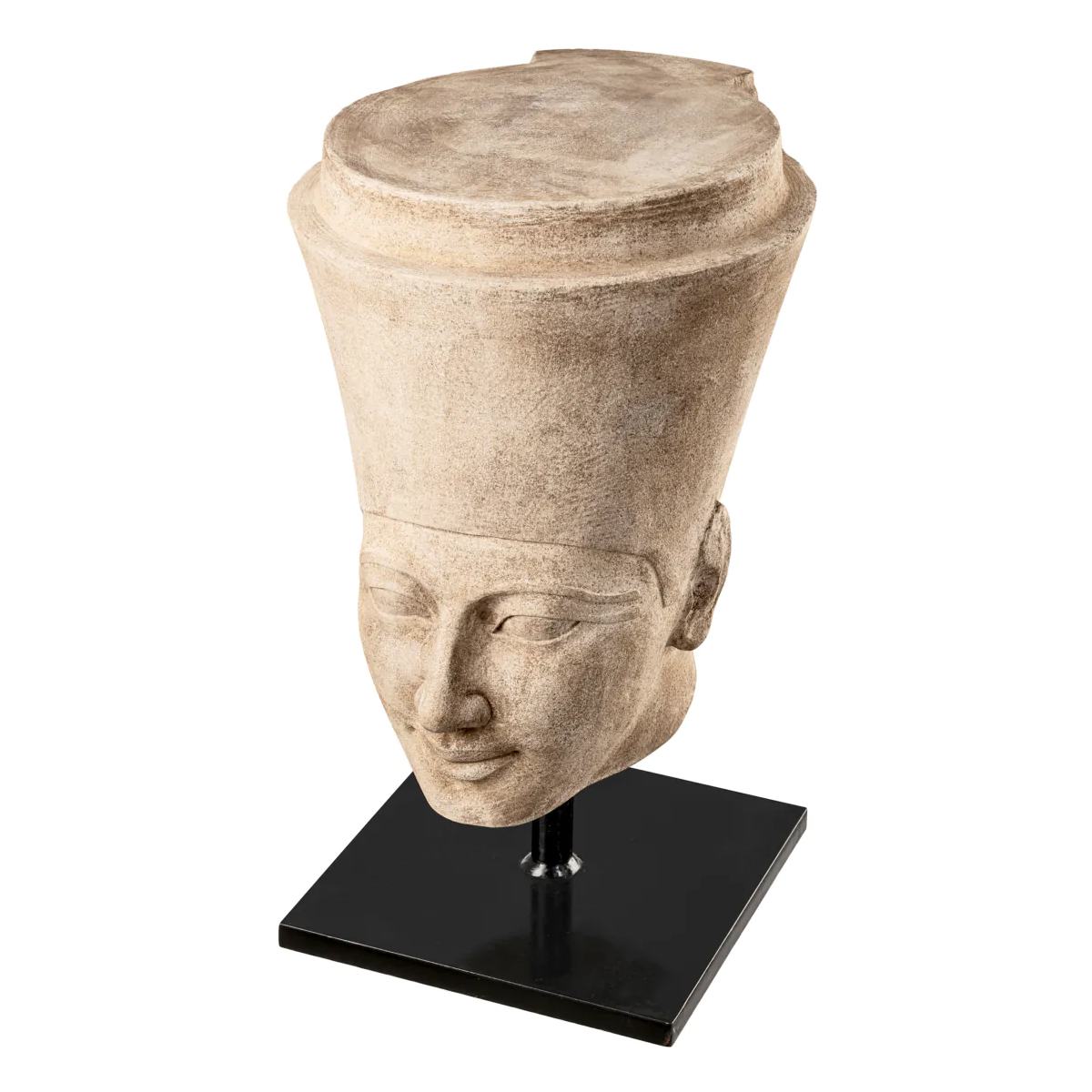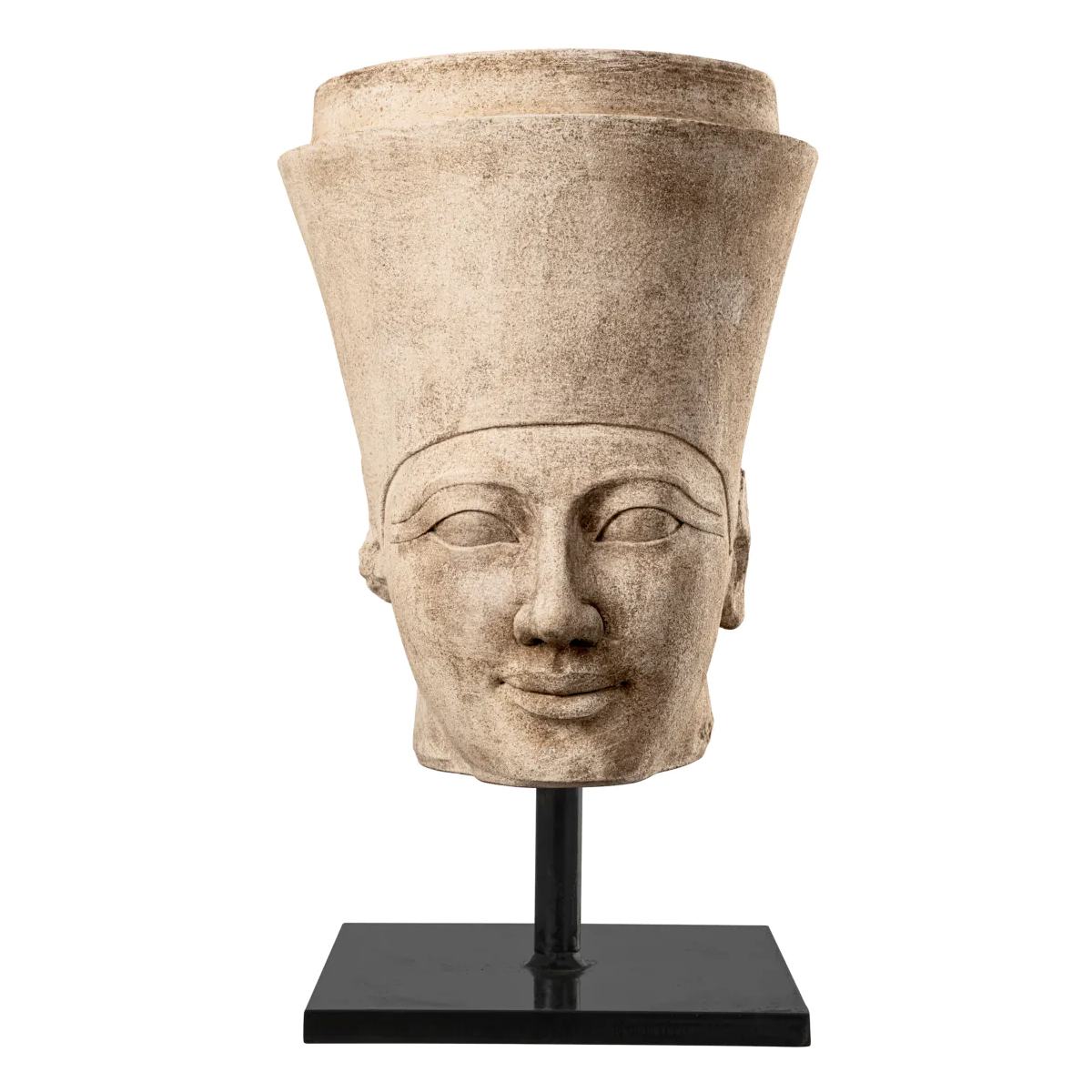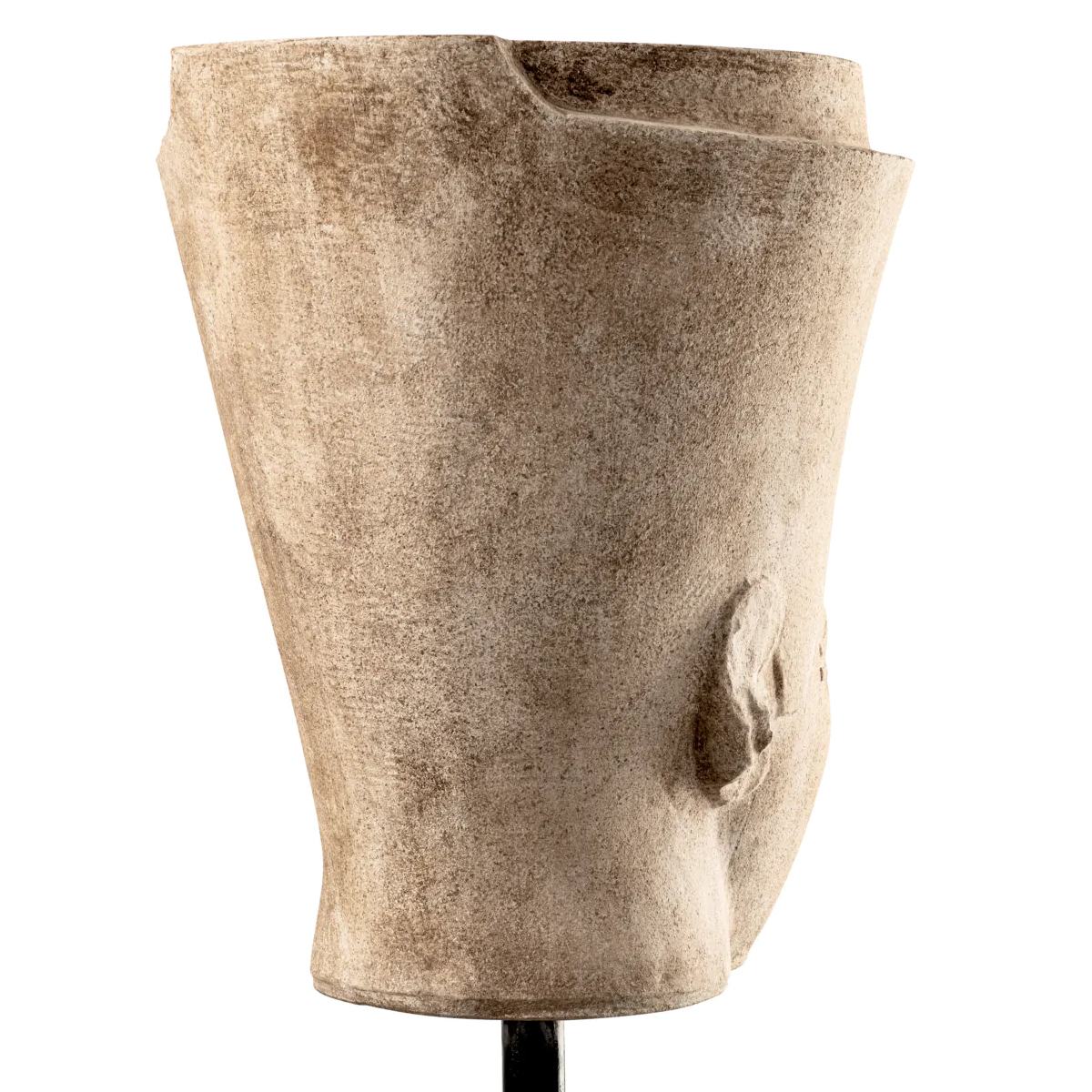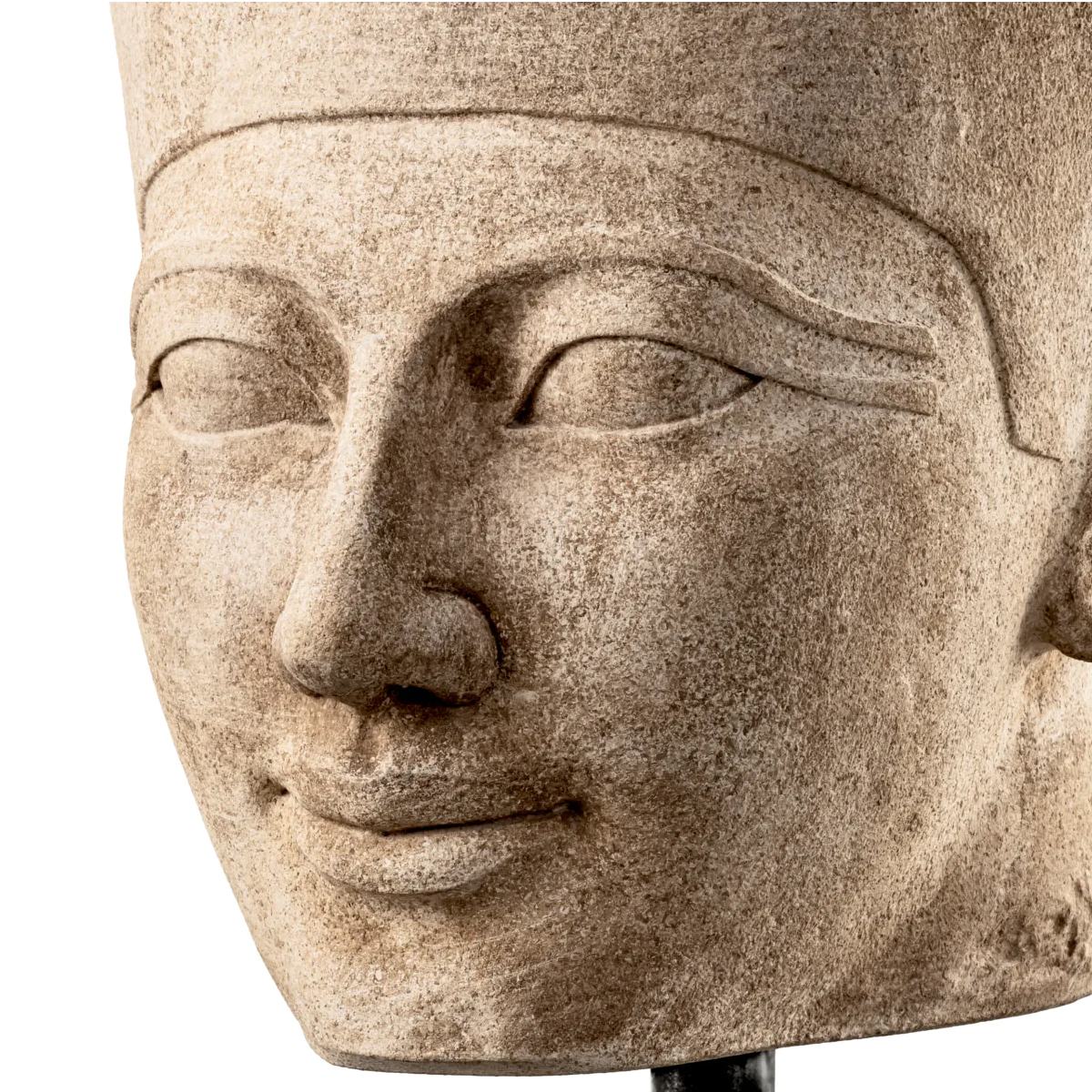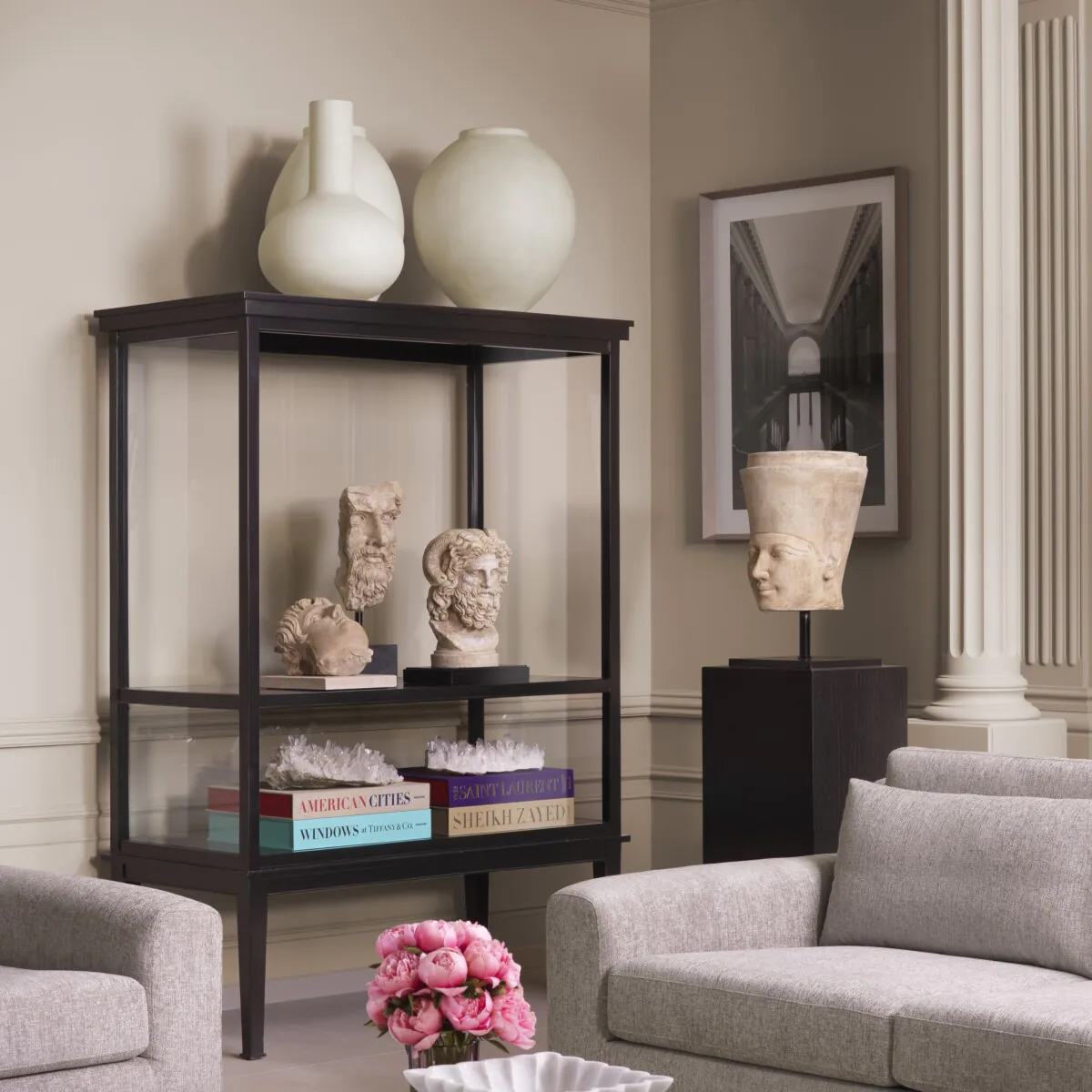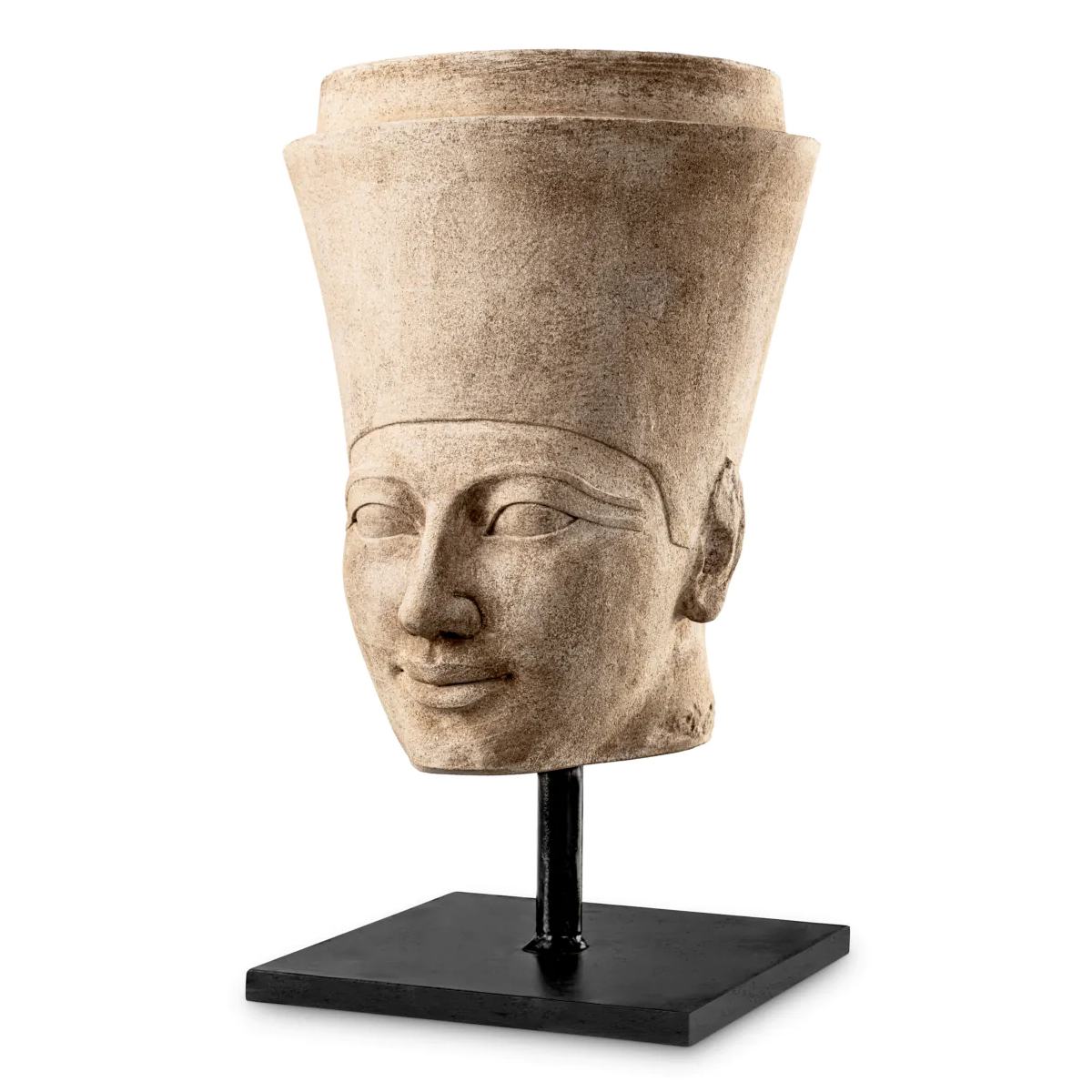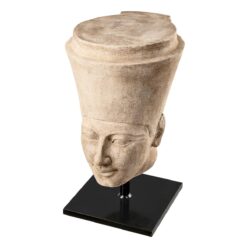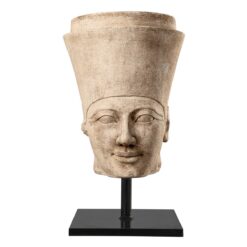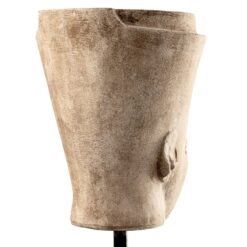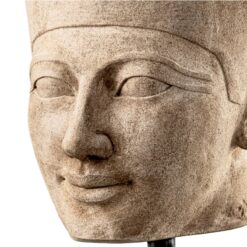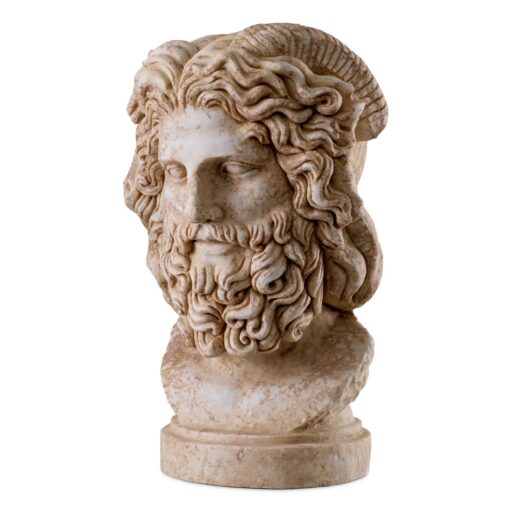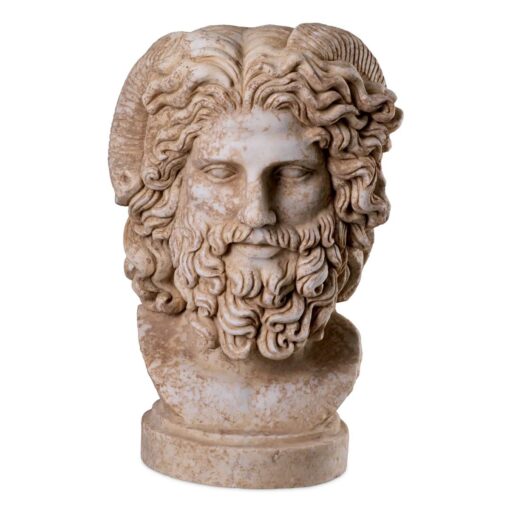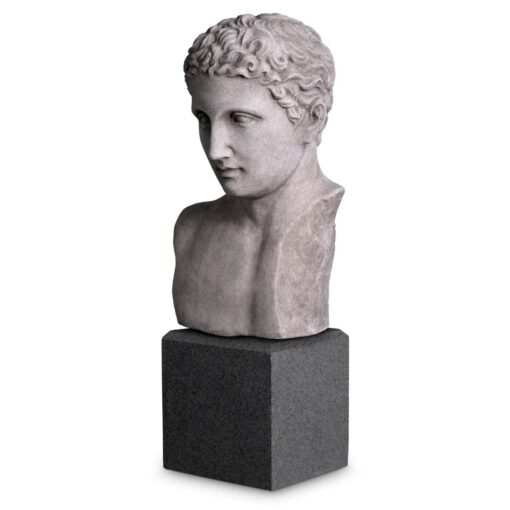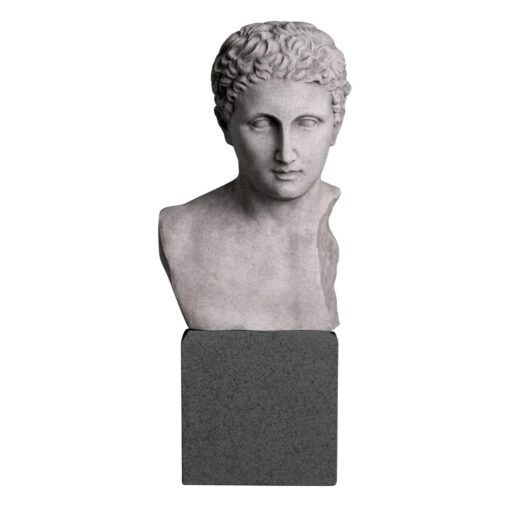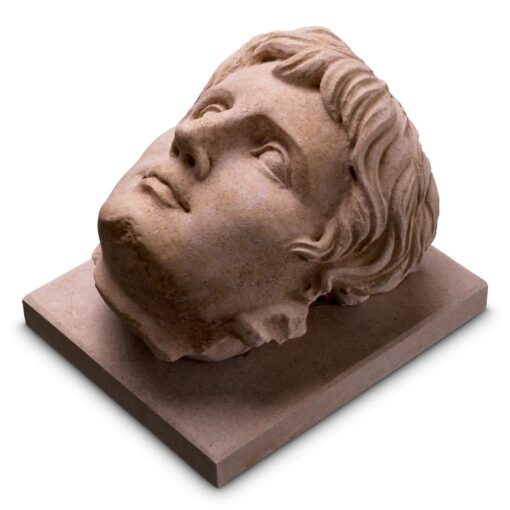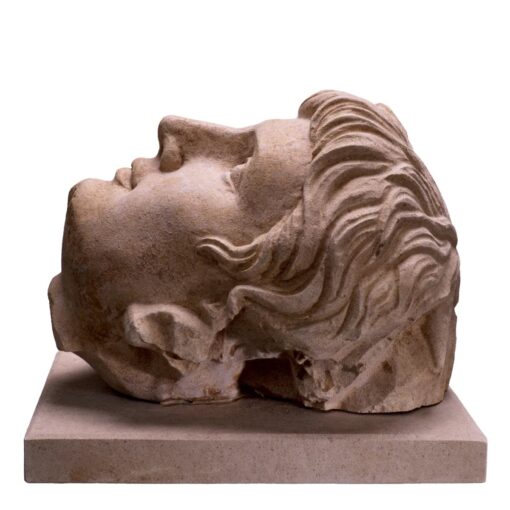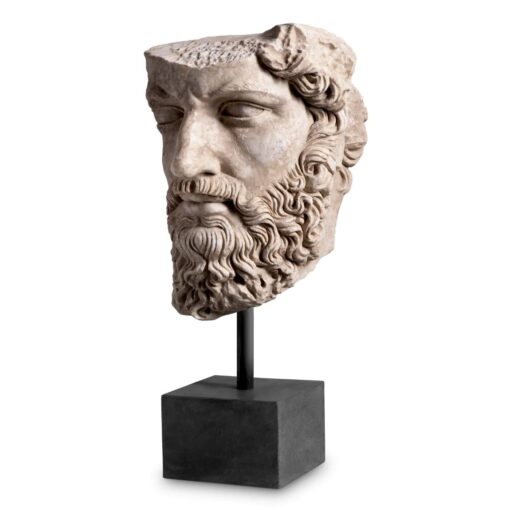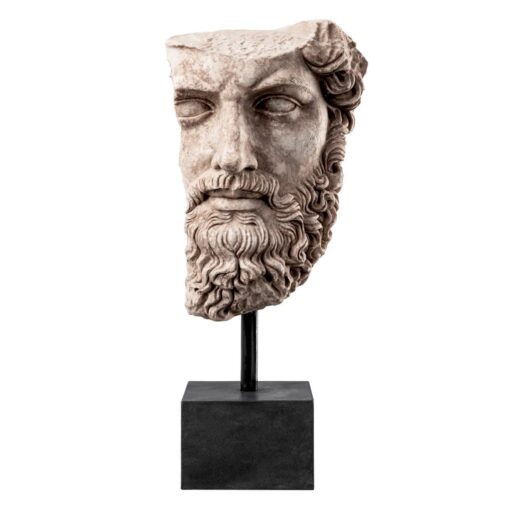Скульптура Hatshepsut
Описание
The ‘Bust of Hatshepsut,’ inspired by The Met’s ‘Head of an Osiride Statue of Hatshepsut,’ is a remarkable piece of handcrafted artistry. Crafted from sandstone and elegantly presented on a black metal base, it stands at W. 30 | D. 40 | H. 58 cm. Each of these stone busts is a unique creation, with variations in color and texture that enhance its individual charm. This piece pays tribute to the ancient beauty and grace of Hatshepsut, making it a captivating addition to any collection.
HISTORIC PROVENANCE
The Bust of Hatshepsut is inspired by the head of an ancient Egyptian Osiride statue of Hatshepsut (ca. 1479-1458 B.C.) at The Metropolitan Museum of Art in New York. The head, which wears a double crown referencing the union of Upper and Lower Egypt, is one of four Osiride figures that stood in the corners of the sanctuary of Amun in Hatshepsut’s funerary temple at Deir el-Bahri. This figure was found in the northeast corner, while two other heads adorned with the white crown of Upper Egypt, also in the Museum’s collection, were found at the southern end of the sanctuary. This elegantly crafted reproduction is hand carved in sandstone, which offers unique variations in color and natural veins, and is placed on a black metal base.











